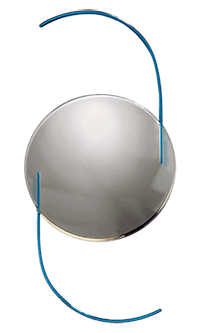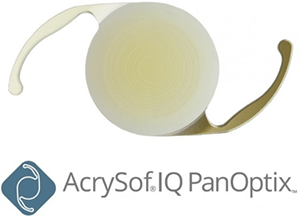
Once you’ve received the appropriate treatment, you’ll be able to see the world around you with greater clarity and vividness than ever before.
Dr. Cutarelli is here for you and has everything you need to feel supported and guided during this process. You can trust that you are in good hands and that he will be with you every step of the way.
Have you noticed your vision becoming blurry or foggy lately? It could be a sign of cataracts. But don’t worry; cataracts are a natural part of aging and can be treated. Although they may seem like an unwelcome guest in your life, your vision can be restored to its former clarity! So, if you’re wondering what happens to your eyes when you get a cataract, know that your vision isn’t permanently impaired.
It might help to picture your eye as a camera. After all, it is how you see the beautiful world around you! A cataract is like a lens on your camera getting dusty or dirty. As the cataract clouds the natural lens, which is an essential part of seeing clearly, light can no longer travel to the retina. The result? You lose your sharp, crisp vision, meaning things can look blurry, foggy, or just plain washed out. But don’t worry, cataracts develop slowly, so you may not even notice them. Dr. Cutarelli will check your eyes to see if you have cataracts, and the good news is that they are painless and can be treated.
We are excited to share our online Cataract Self-Test with you! It’s a great tool that can help you gain a better understanding of your eye health and ease any worries you may have. Taking the test is quick, easy, and informative. Click on the link below to get started, and we hope it makes a positive difference for you!
It’s totally understandable to feel curious about why cataracts have developed and what may have caused them. But it’s important to keep in mind that cataracts are simply a natural part of the aging process and there’s no need to assign blame. Instead of dwelling on that, let’s focus on the exciting journey of improving your vision!

With three easy light treatments Dr. Cutarelli performs, get the vision you want without boundaries. Want to hike a mountain? No problem! Want to spend time catching up with old friends and reminiscing? You can do all this and never have to worry about if your vision will hold you back. The Light Adjustable Lens is a premium lens you can choose before cataract surgery. Premium lenses simply give you more options.
If you want to say goodbye to your visual aids, a premium IOL like the Light Adjustable Lens will change your life. And if you have astigmatism? The Light Adjustable Lens can even correct up to 0.75 diopters of astigmatism. That means that you can correct visual issues while also saying so long to cataracts and blurry issues when you choose the Light Adjustable Lens.

You can experience the world with incredible clarity in the blink of an eye. Your IOL choice shouldn’t hold you back from living the life you love! Be active without boundaries.
Seeing things differently is so much easier, thanks to the PanOptix trifocal IOL. Whether reading a book, working on the computer, or using your phone, you’ll have a full range of vision. Life without visual aids is so much better!
Why should blurry vision stand in the way of living your life? It doesn’t have to with toric IOLs that correct astigmatism. Bid farewell to your blurry vision while embracing a life free from cataracts.
Now, let’s talk about transformation! Close your eyes and imagine what life will be like without blurry vision. Dr. Cutarelli, with his extensive experience and dedication to patient care, is here to guide you through a transformative and life-changing experience: cataract surgery. Picture yourself in the hands of the most capable surgeon who not only understands how the eye works but the emotions that come with transforming your vision.
As you prepare to have cataract surgery, you’re not just undergoing a vision procedure; you’re embarking on a once-in-a-lifetime journey to reclaim the vision you thought you lost and may have taken for granted.
With a gentle touch and endless experience, Dr. Cutarelli will remove your cloudy natural lens that’s dimmed your world. It’s like watching the fog clear, revealing the beauty underneath. It’s okay if you’re nervous or uncertain about what to expect but remember: you’re not alone. You have the entire team at Cutarelli Vision by your side.
We understand how you feel. If you’re anxious about what lies ahead, it’s okay to wonder what could be next. But as you undergo cataract surgery, you’ll finally feel the weight of your cataracts lift off you emotionally and physically. Focus on the glimmer of hope and the ray of light that cataract surgery will give you. Your once-obscured vision will finally come into focus. There may be nothing more emotional than the moment that you open your eyes and see the world becoming clearer and filled with endless possibilities after cataract surgery.
You’re experiencing pure joy and all the world around you has to offer. Colors will be brighter, crisper, and more breathtaking than ever imagined. Cast aside the foggy windows and open up a crystal-clear pane that invites you to explore the world in vivid detail. Smiles, faces, places: everything will be clearer and more defined after cataract surgery.
Step outside and notice the leaves on the trees. Their bright colors while they rustle in the wind. Marvel at each leaf’s delicate and intricate patterns and what nature can create. See faces light up with newfound clarity; you know precisely who is before you and can connect more deeply and freely now. Read a book, work on your laptop, or gaze at a sunset without cloudy vision. You’re no longer bound by the limitations of cataracts. It’s a great feeling.
This journey is about more than seeing the world; it’s also about seeing yourself. You’re not only reclaiming your vision when you have cataract surgery, but you’re rediscovering the essence of who you are. You’re embracing the world and its riches with better vision. That makes for a better you who can embrace the clarity and beauty awaiting you. Cataract surgery opens the door to a more beautiful life filled with endless possibilities.
We’re here to help you embrace the life you deserve! The path to your more radiant life begins by requesting a consultation for cataract surgery at Cutarelli Vision in Denver, CO. Don’t let blurry vision hold you back any longer.
Embrace all that could await you after cataract surgery. Request your consultation and rediscover the world in all its vivid splendor!
Dr. Cutarelli was the first LASIK surgeon in the Denver area to offer his patients All-Laser LASIK - utilizing the most exciting combination of technological LASIK advancements, delivering the best possible visual outcomes and the sharpest laser vision correction possible. Cutarelli Vision is a leader in LASIK surgery in Colorado. People travel from across the country to receive our expert care. If you're seeking world-class LASIK - Cutarelli Vision is your destination.